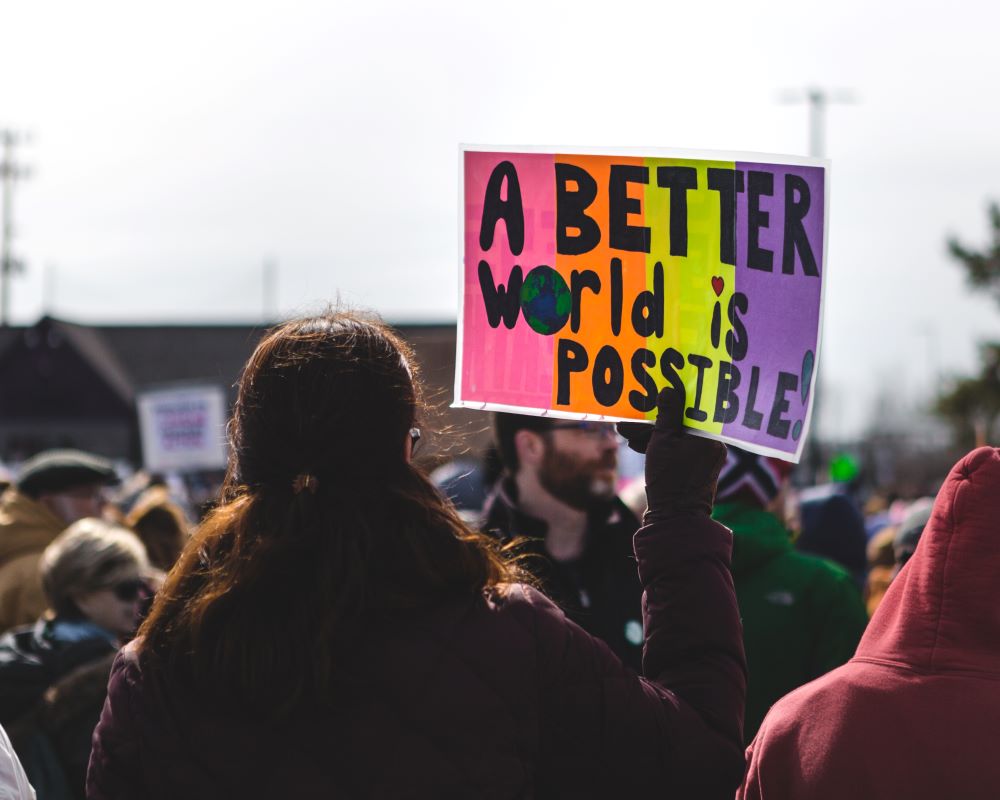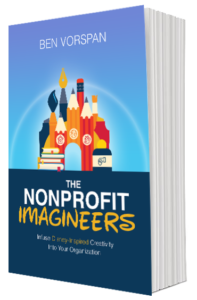
Today I received four emails from schools and organizations advising me to remove social media apps from my son’s devices. But not for the reason you think. According to these four emails, and a barrage of warnings from fellow concerned parents, a flood of new graphic and disturbing videos originating in the south of Israel is headed straight to the screens of preteens around the world.
This is not a Mid-East crisis. It’s not a Jewish crisis. This is a crisis rooted in the perpetuation of racism and hate, and regardless of your political beliefs, faith, nationality, or skin color, this affects all of us. And our children.
From donors to board members, CEOs to assistants, we all hold different positions at an array of mission-driven nonprofit organizations, but in those roles we all have one thing in common – we fight for the social good. We are lights during dark times. And we have the ability and responsibility to do something about this epidemic of hate.
You might not have direct ties to the war in the Middle East, and you might argue that your organization has nothing to do with racism or politics, but that doesn’t mean you don’t have the power to make a lasting difference in mitigating the hatred that continues to afflict our society.
In a world often marred by divisions, conflicts, and needless hate, even without diverting a single cent away from our primary missions, we can play a pivotal role in promoting peace and combating racism. Our philanthropic efforts should extend beyond simply applying funds to our missions. By encompassing the values, actions, and initiatives that our drive is built on, we can reshape society and contribute to a more harmonious world. Let’s explore the importance of using the philanthropic work we do in the fight against hatred and racism, and considering five non-monetary ways our nonprofit organizations can promote peace.
The Roots of Hatred and Racism
Before delving into the significance of philanthropy in addressing these issues, it is crucial to understand their underlying causes. Hatred and racism often stem from fear, ignorance, and the perpetuation of stereotypes. The road to peace begins with acknowledging these root causes and taking action to counteract them.
Fear
Fear is often at the core of hatred and racism. People may fear what they do not understand or what is different from their own experiences. This fear can manifest as prejudice and discrimination, leading to harmful stereotypes and biases against individuals or groups who are perceived as “other.” Understanding this fear, and doing what we can to combat it, is a vital step in addressing hatred and racism.
Ignorance
Ignorance, or lack of knowledge about different cultures, backgrounds, and experiences, can fuel prejudice and bigotry. When individuals lack exposure to diverse perspectives, they may hold misconceptions and rely on stereotypes to fill the gaps in their understanding. Philanthropy, through educational initiatives that also meet our missions, can help bridge these knowledge gaps.
Stereotypes
Stereotypes are oversimplified, often negative, generalizations about groups of people. They perpetuate the notion that all individuals within a particular group share the same characteristics or behaviors. Stereotypes can lead to discrimination and prejudice. Addressing stereotypes requires education, exposure to counter-narratives, and changing public perceptions.
The Role of Philanthropy in Fighting Hate
The fight against hatred and racism and the pursuit of peace require multi-faceted efforts that cut off hatred at the root, and philanthropy plays an integral role in this process. These are a few ways that we can enhance our programs to encourage peace.
Education and Awareness
Our nonprofit organizations can play a pivotal role in promoting peace by focusing on education and raising awareness. Our organizations can develop and disseminate educational materials and programs that foster a deeper understanding of diversity and inclusivity. Workshops, seminars, and public campaigns can provide insights into the experiences of marginalized groups and the damaging effects of racism. By empowering individuals with knowledge, we can help break down the walls of ignorance and fear.
Building Empathy
Empathy is a cornerstone of peace-building. We can create platforms for open and honest conversations where individuals from diverse backgrounds can share their stories. These platforms, whether in-person or online, can encourage individuals to walk in the shoes of others, developing a greater sense of empathy. By humanizing those who have been unfairly labeled or marginalized, empathy paves the way for increased understanding and respect.
Promoting Interfaith and Intercultural Dialogue
Interfaith and intercultural dialogues can be a powerful tool in the fight against hatred and racism. We can organize events, conferences, and community meetings where people of different faiths and backgrounds come together to share their beliefs and experiences. These interactions help break down prejudices and stereotypes and build bridges between communities.
Collaborative Partnerships
We can seek collaboration with other organizations, including those outside our sector. By partnering with schools, businesses, government agencies, and community groups, we can create a network of support that combats hatred and discrimination. These partnerships can lead to collective actions, awareness campaigns, and coordinated responses to incidents of hatred.
Promoting Arts and Culture
The arts can serve as a powerful medium for social change. We can support and promote artistic expressions that challenge stereotypes, celebrate diversity, and tell the stories of marginalized communities. This can be done through art exhibitions, cultural festivals, and community art projects that bring people together and showcase the beauty of different cultures.
Now Be Creative and Do Something!
Those are just five ideas. There are countless more. And while each approach to fighting hate is different, they all share the same “creative intent,” or common purpose. Imagine if every nonprofit organization, each in their own way, and while still accomplishing their core mission, also aimed to end hatred. Imagine the number of children we could reach in our unique but unified pursuits, thus putting the next generation of leaders on the correct path to peace. Imagine how impactful and world-changing it would be if every school, church, community center, humanitarian aid organization, environmental group, government agency, and countless others temporarily added “… and to end hatred” to their mission statement.
It might seem impossible, but it’s not. It just takes us making the decision to take action, and then doing it. By reframing existing programs, and applying a lens of building tolerance, empathy, and awareness, we can prepare the next generation to build a healthier tomorrow without any extra funding or manpower. The important thing is that we each choose whatever approach most directly aligns with our mission and the programs we currently hold, and take action.
We can and should serve as catalysts for change, leveraging what we do everyday to reshape societies and promote peace. While monetary donations are valuable, the non-monetary contributions of time, knowledge, and advocacy are equally powerful in the mission to eradicate racism, build empathy, and foster peace in the world. By working together and embracing the principles of philanthropy, we can address the root causes of hatred and racism and strive for a more inclusive, equitable, and harmonious world.
 Celebrate 2 years of Imagineering!
Celebrate 2 years of Imagineering!
Comments are closed